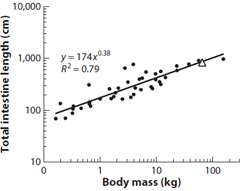Paper from the @IAEANA dlwdatabase.org group @NatMetabolism , this one led by @JohnSpeakman4 tracking changes in daily expenditure over the past 40 years. Some fun stuff to unpack! 1/
nature.com/articles/s4225…
nature.com/articles/s4225…
One possible reason for the #obesity pandemic is ⬇️expenditure. @WHO for example cites "physical inactivity due to the increasingly sedentary nature of many forms of work" as a major cause of obesity. But has Activity Expenditure really declined? 2/
who.int/news-room/fact…
who.int/news-room/fact…
The dlwdatabase.org allows us to test that idea, with >7,000 measures of daily expenditure starting in 1982. For this study, we had >4,000 adults including >1,400 with BMR to test for declines in expenditure 3/
Looking at raw numbers, Total daily expend (TEE) and Activity Expend (AEE) didn't change from 1980's today in men or women. But BMR declined! 4/ 

When we adjust for body size and composition, a pattern emerges: ⬇️ Total expend due to⬇️BMR... but⬆️Activity Expenditure. The effects aren't strong, typically r^2 < 0.05, but they're there. Here's adjusted data for men 5/ 

Why the decline in BMR?? That's the big question. The pattern in the dlwdatabase.org data match what we see in BMR records since the early 1900's, a steady decline in BMR. This is a long term change. 6/ 

⬇️BMR could be due to diet changes. Others have argued for this like @fire_bottle . @JohnSpeakman4 led additional analyses showing ⬇️BMR with less saturated fat in mice 🐭but not clear yet in humans. 7/
Could also be due to ⬇️immune function. Collabs w @MGurven @SSUrlacher and others have shown BMR correlates with immune function markers in the Tsimane and Shuar communities, for example 8/
pubmed.ncbi.nlm.nih.gov/32064311/
pubmed.ncbi.nlm.nih.gov/27375044/
pubmed.ncbi.nlm.nih.gov/32064311/
pubmed.ncbi.nlm.nih.gov/27375044/
In any case, the ⬇️over the past century corresponds nicely w the ⬇️in body temperature. Both are interesting puzzles at the moment. Solve one and you might solve the other. 9/
pubmed.ncbi.nlm.nih.gov/31908267/
pubmed.ncbi.nlm.nih.gov/31908267/
What does all this mean for #obesity ? First, it strongly challenges the idea that ⬇️physical activity has caused the obesity crisis. By these measures, daily activity expenditure is *higher* today than it was 40 years ago. Time to rethink the guidelines @WHO @CDCgov & others 10/
Second, it could rescue the idea that ⬇️expenditure is a factor in global obesity. Energy imbalance hinges on Total expend : Intake, and total expend is⬇️. Still, I'm skeptical 11/
The reduction in BMR seems to start before the obesity crisis. More importantly when we look at people with obesity today we *don't* find that they have ⬇️total expend. This was true in the 1980's too. 12/
pubmed.ncbi.nlm.nih.gov/3083978/
pubmed.ncbi.nlm.nih.gov/3083978/
And when we track people over time (months to a few years) we don't see ⬇️total expenditure as a risk factor for weight gain @RimbachRebecca 13/
pubmed.ncbi.nlm.nih.gov/35013190/
pubmed.ncbi.nlm.nih.gov/35013190/
More to do, as always, and the paper points to intriguing next steps: testing the factor(s) that ⬇️BMR, whether ⬇️total expend is causal for obesity in longer longitudinal studies, and looking again at how/whether changes in lifestyle cause BMR or total expend. 14/
A big thanks to everyone who has contributed data to the dlwdatabase.org ! This dataset has opened up a world of cool and useful analyses that weren't possible before. If you have an idea for an analysis, check out the website - the dataset is free to use! 15/
• • •
Missing some Tweet in this thread? You can try to
force a refresh

 Read on Twitter
Read on Twitter








